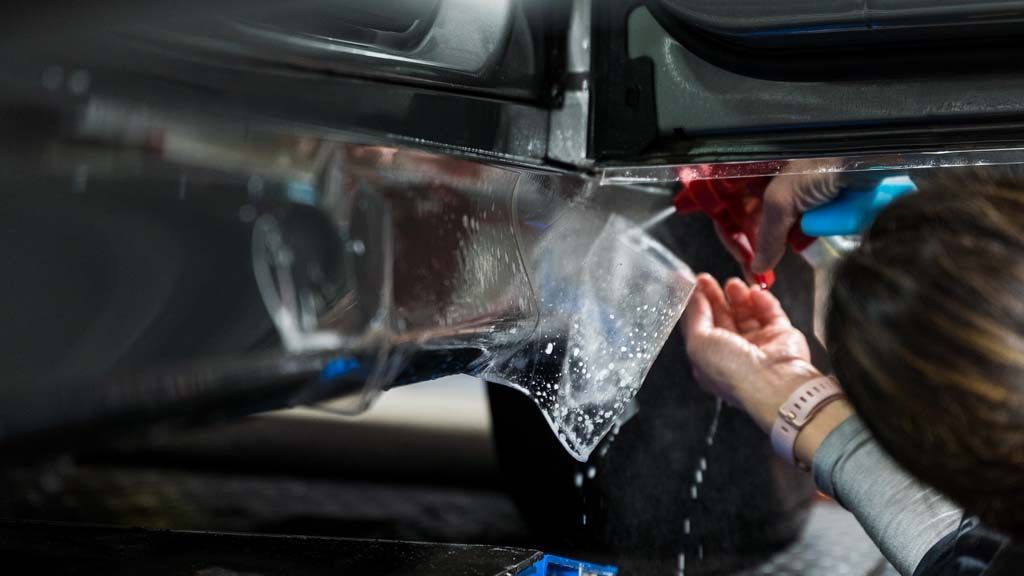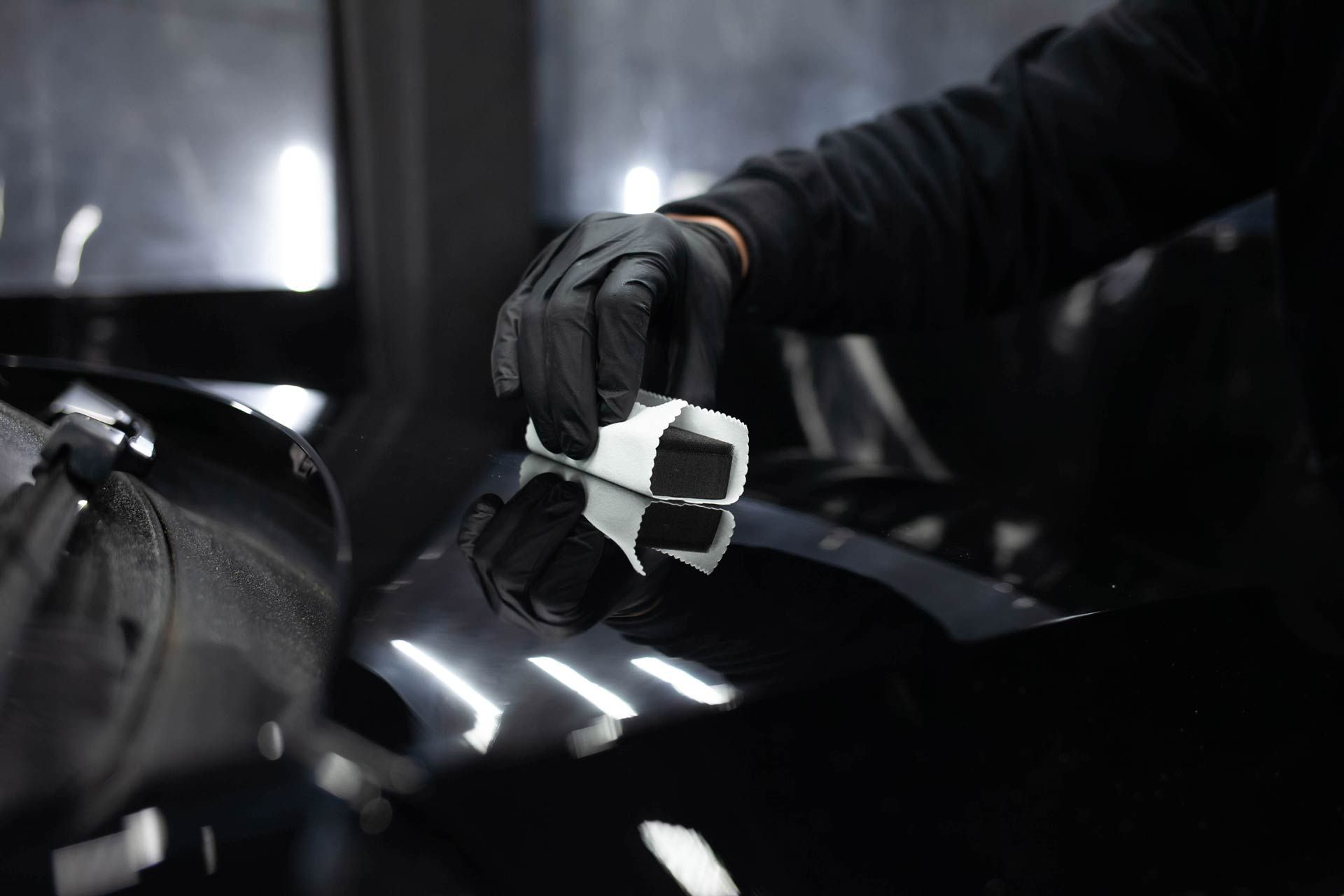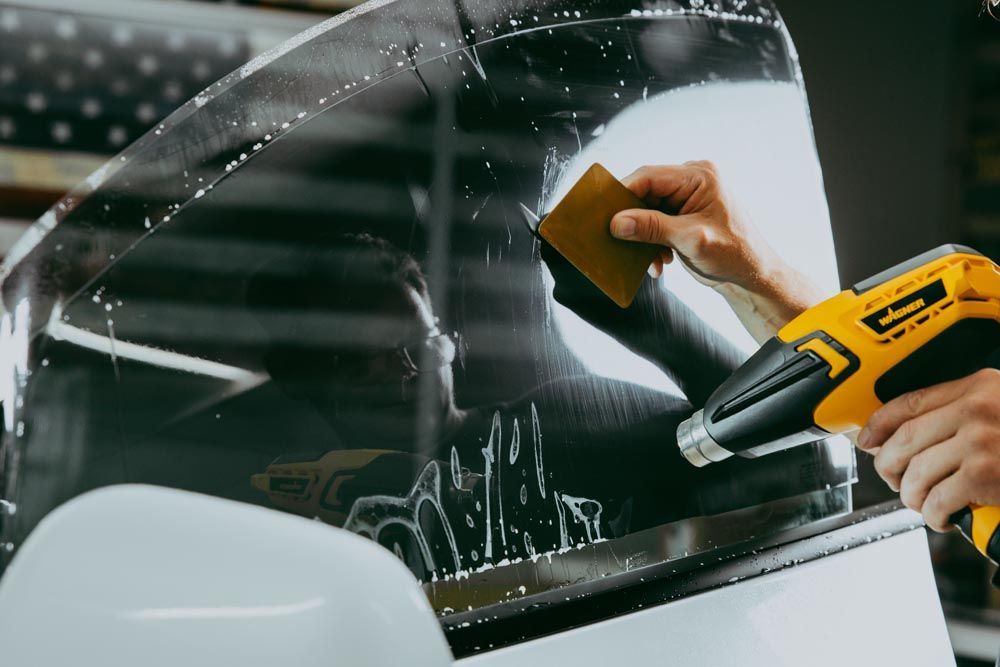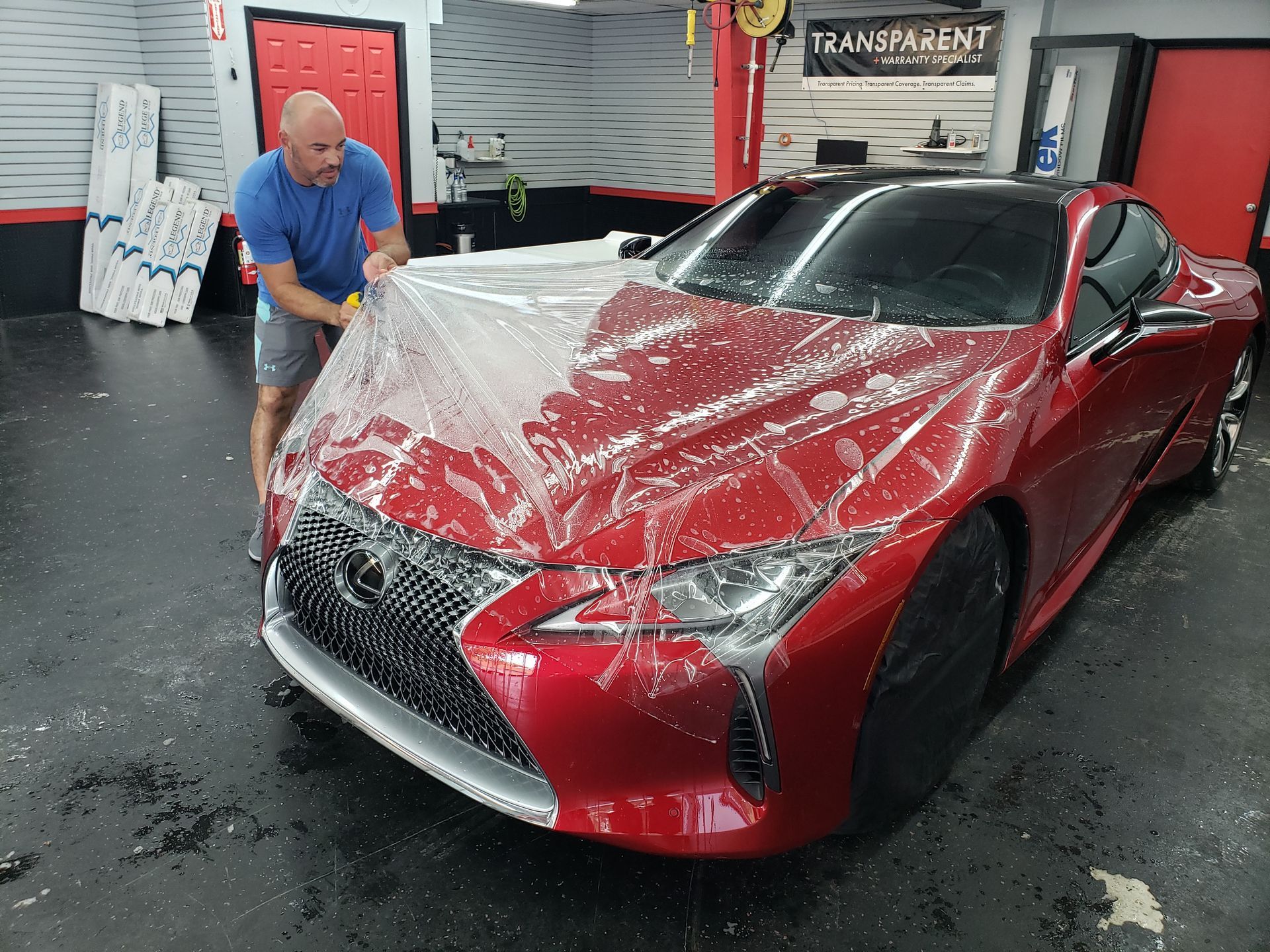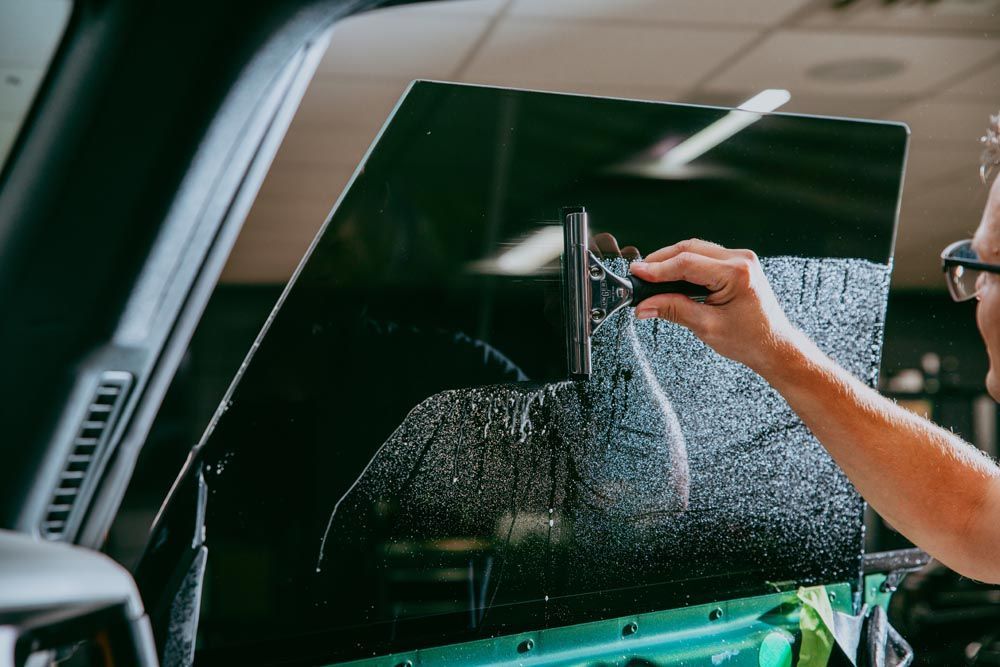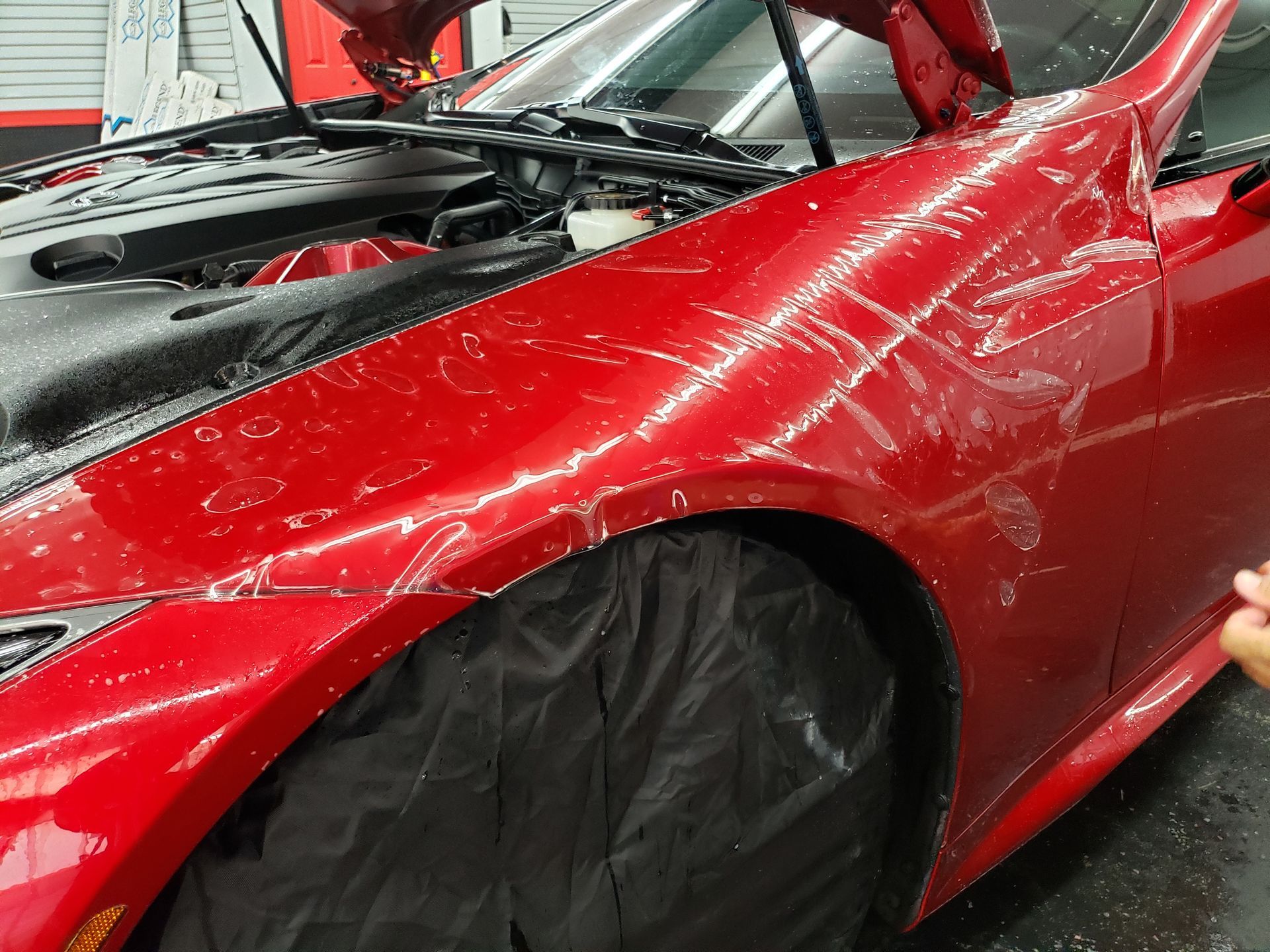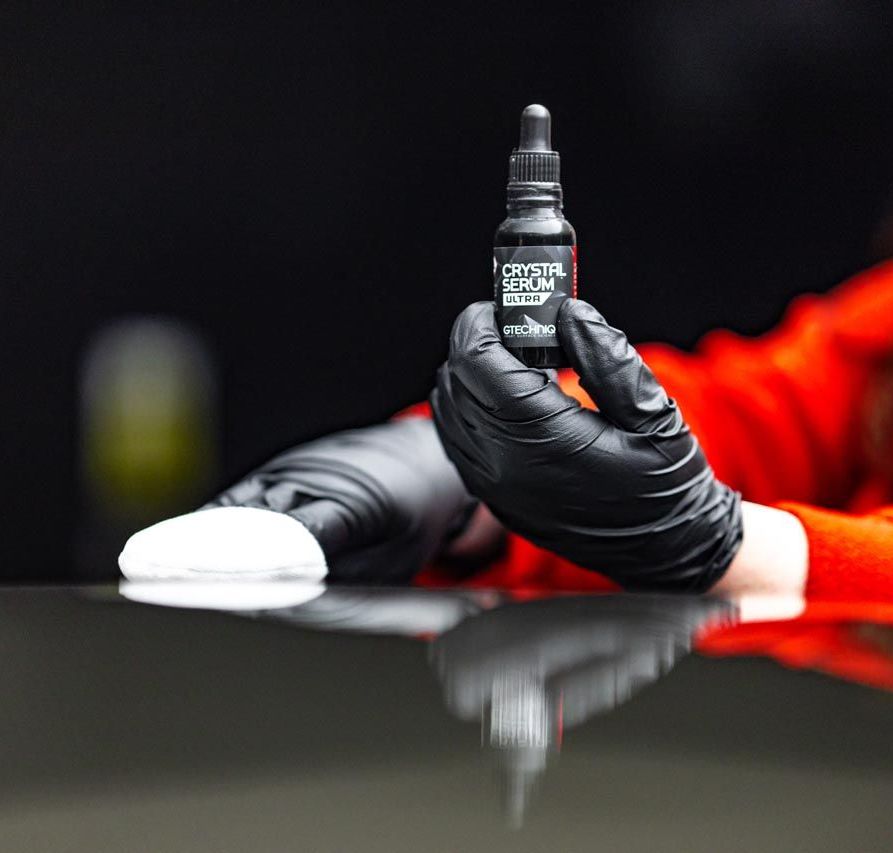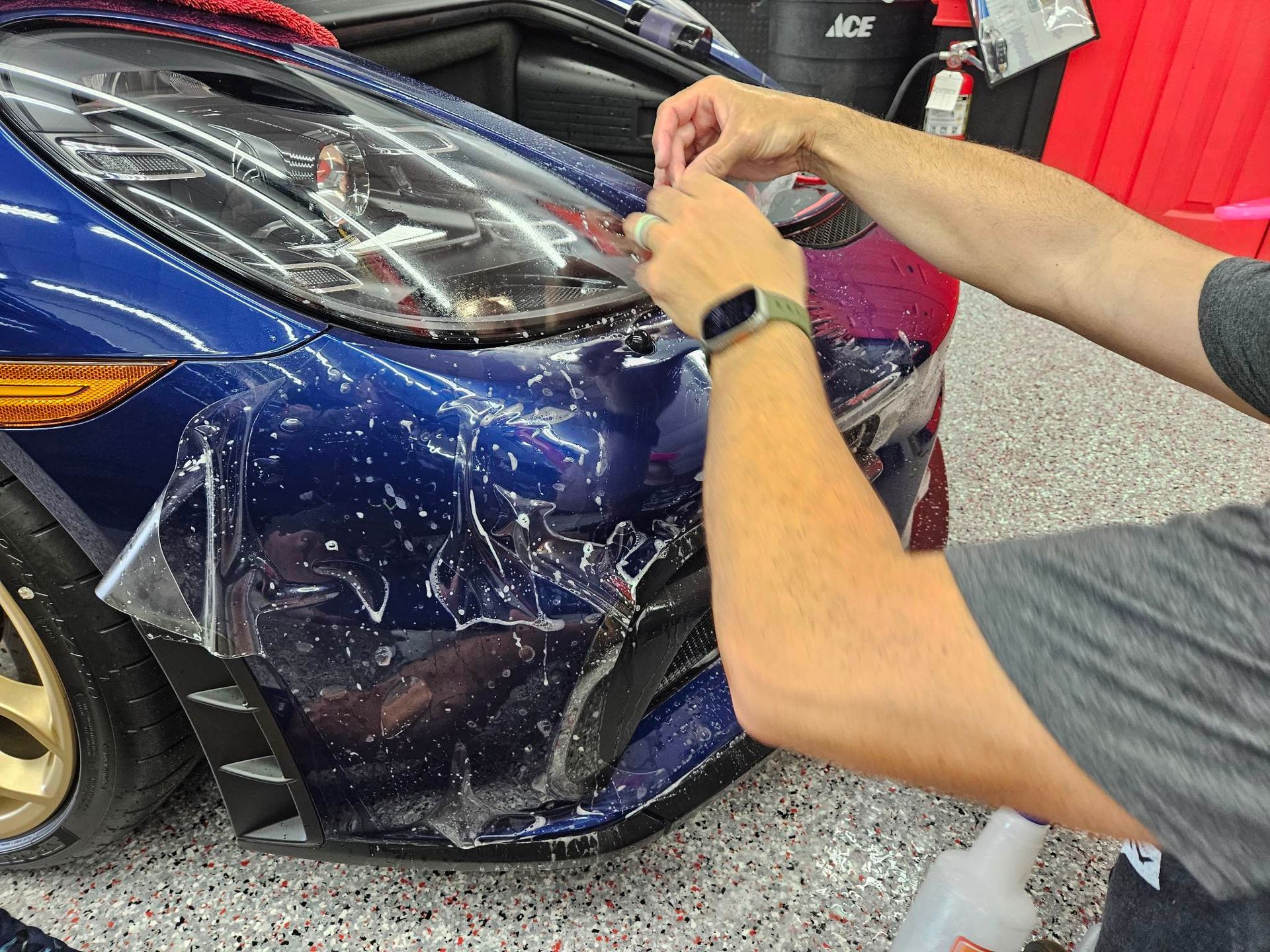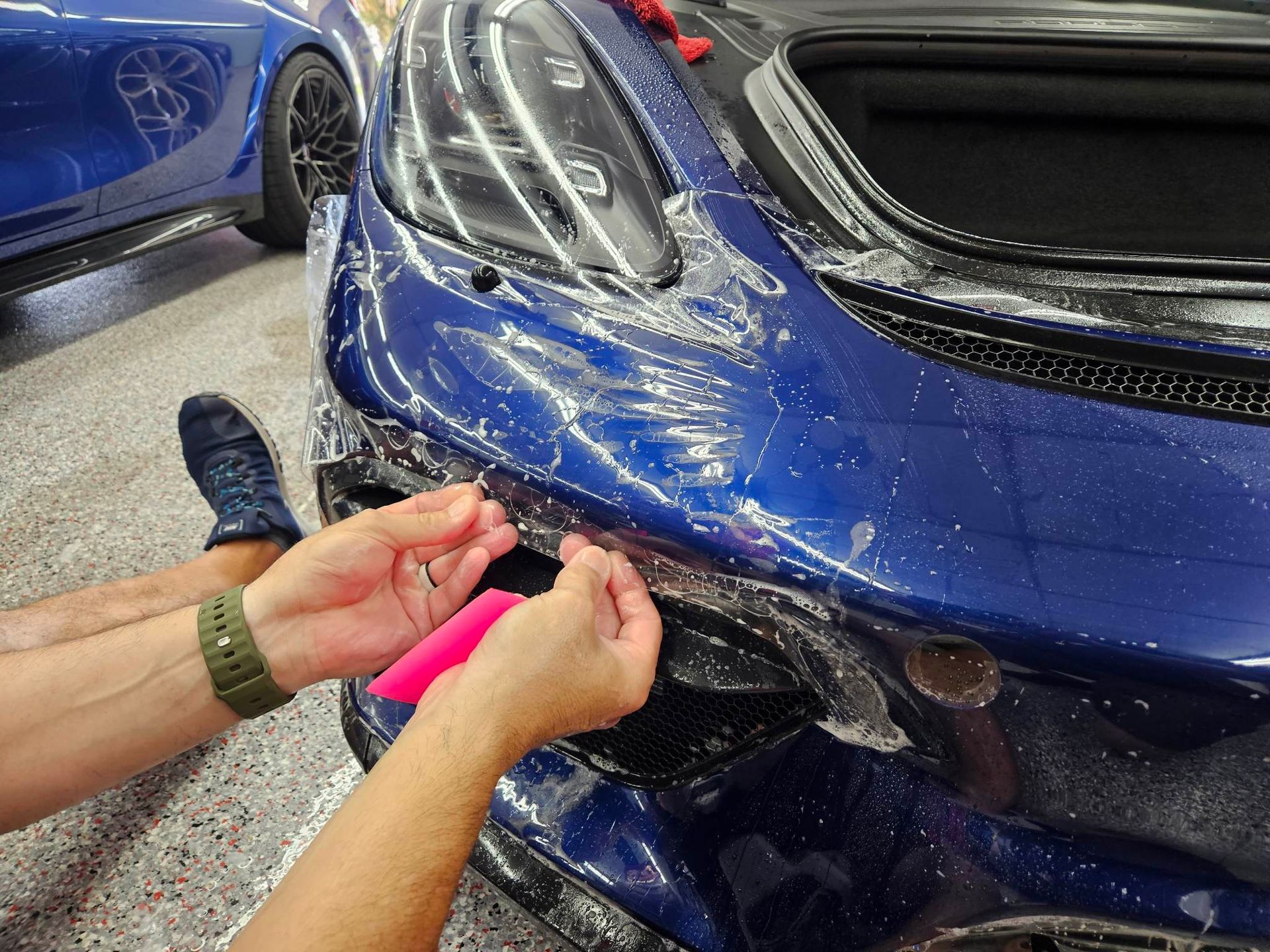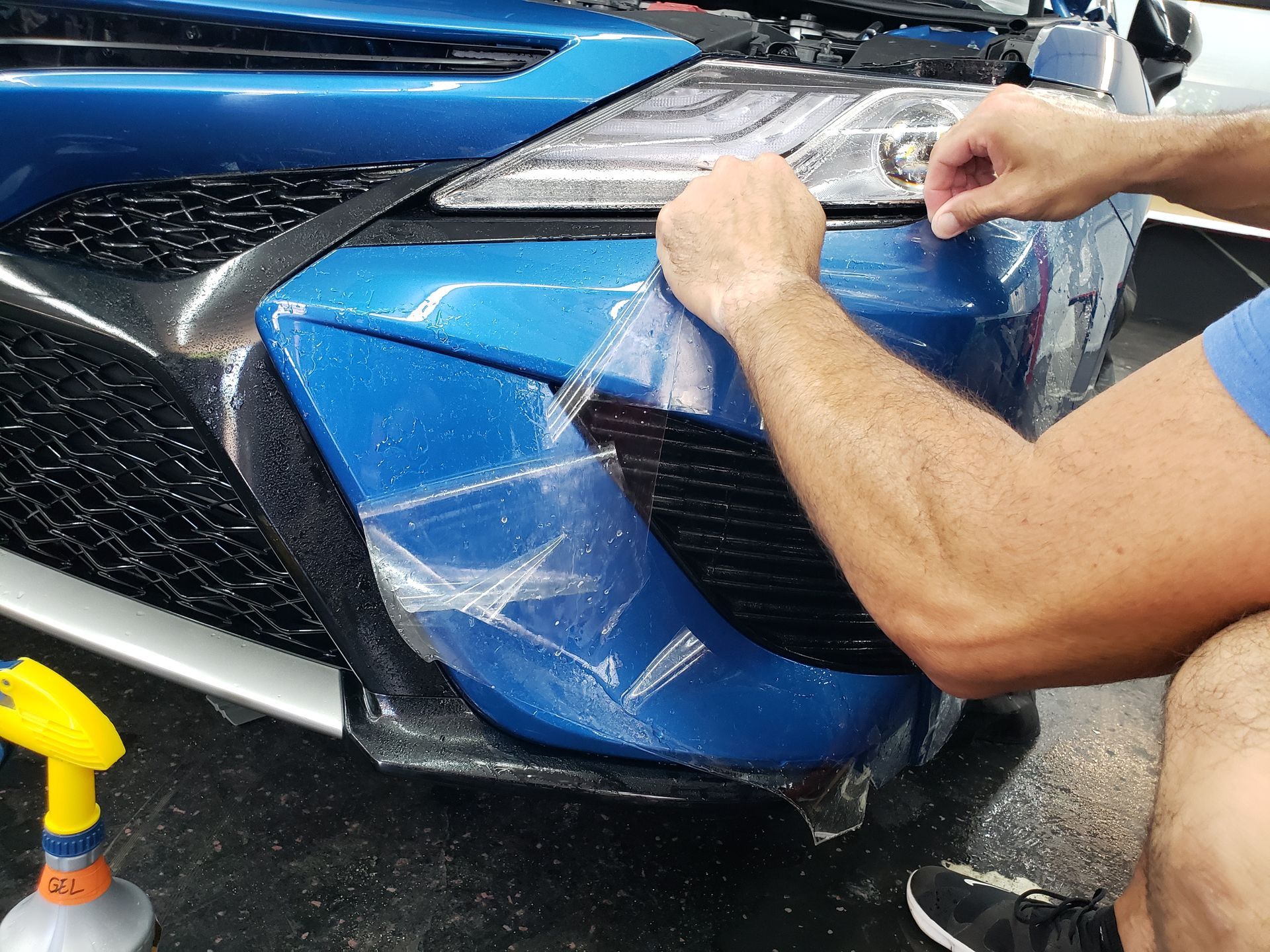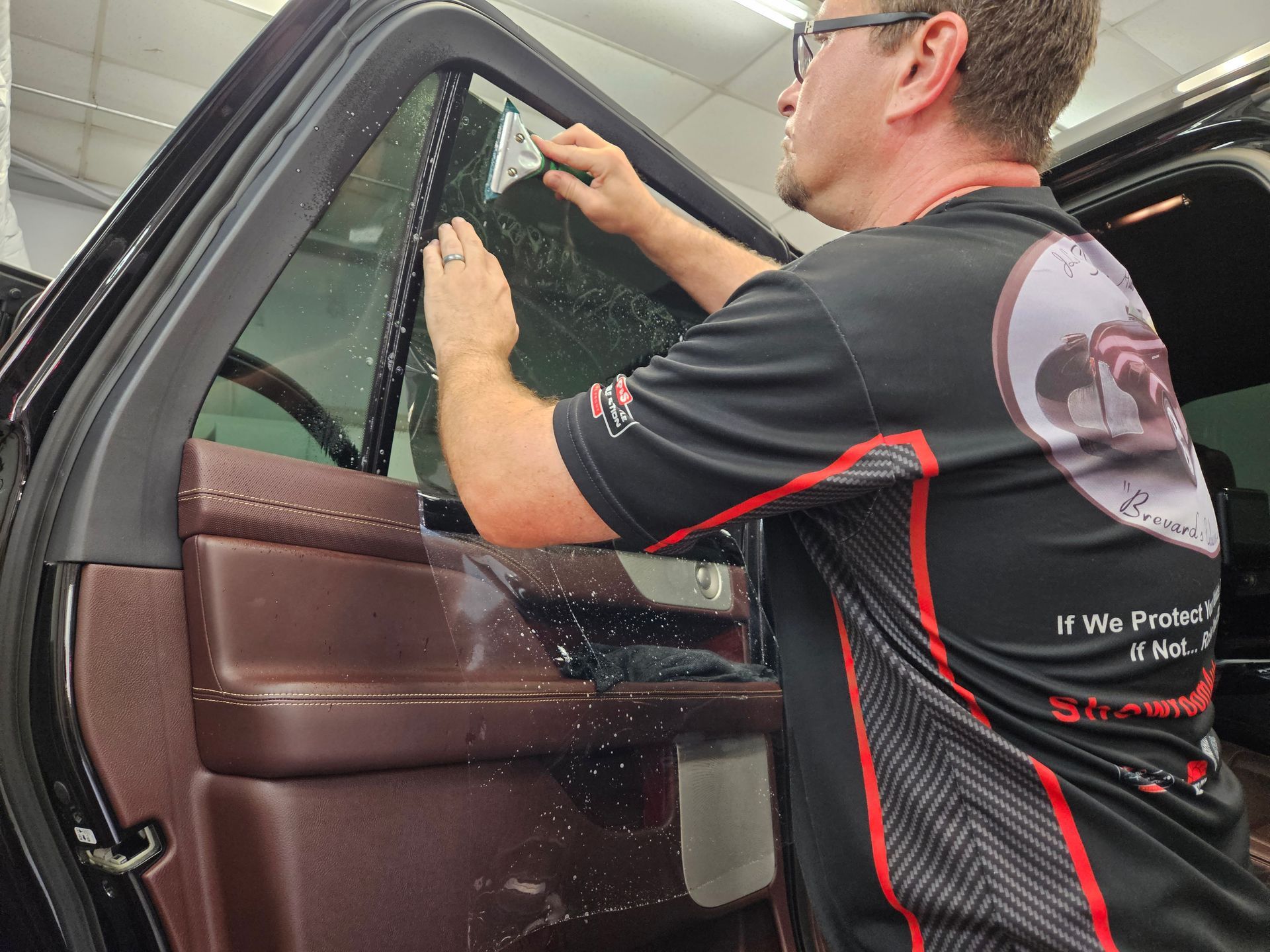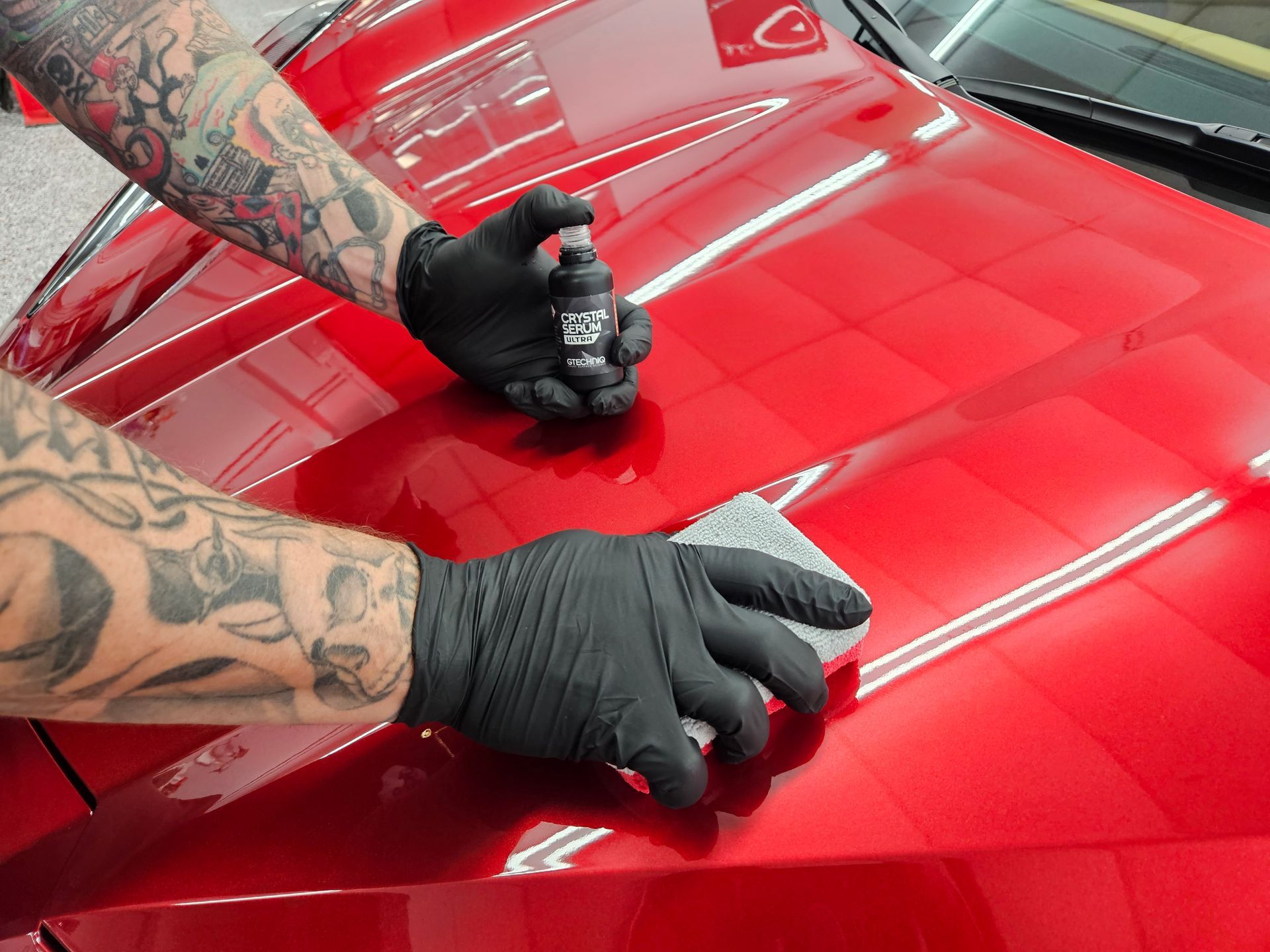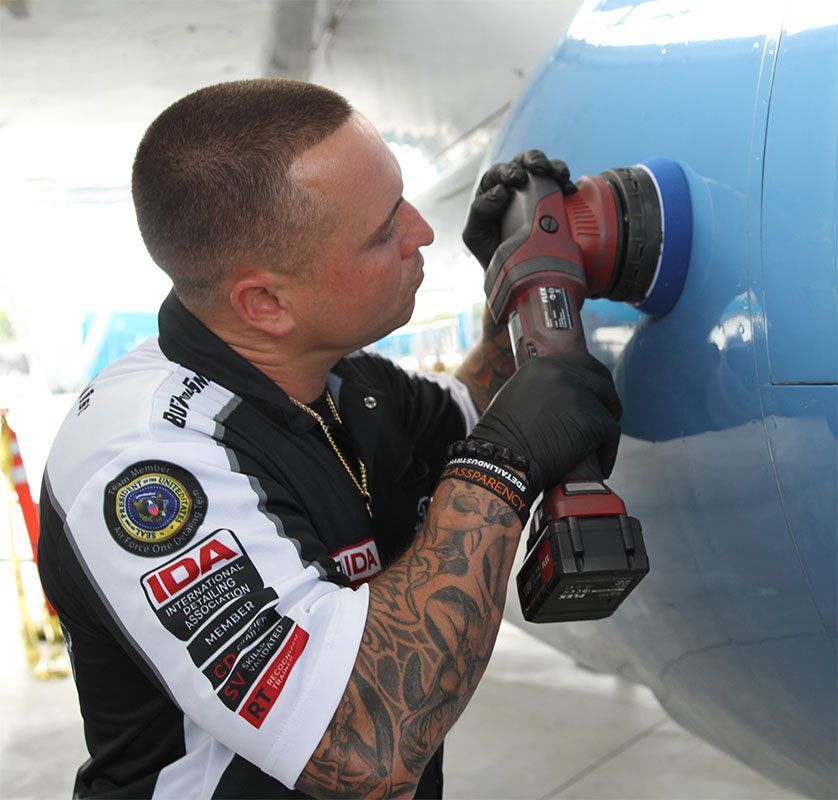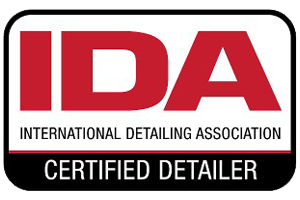Professional vs. DIY PPF Installation: Comparing Pros and Cons, Benefits, and Cost
Professional paint protection film installations offer solid expertise, specialized tools, and quality materials for flawless application. This comes with warranties that assure customers of the work's durability and excellence, which a safety net DIY technique may lack. However, the calm fulfillment of mastering a new skill and potentially saving on cost makes DIY paint protection film installation an enticing venture for many. Surprisingly, both options have their own allure, depending on individual preferences and circumstances. An insightful walkthrough of both alternatives awaits.
When it comes to PPF installation, opting for professional installation offers access to high-quality products, expert application techniques, and better warranties. While DIY installation may seem cost-effective, the risk of mistakes and challenges in achieving professional-grade results make professional paint protection film installation a more prudent choice for long-lasting protection for your vehicle.
Professional PPF Installations: An Overview
When it comes to protecting your vehicle with paint protection film, opting for a professional installation can make all the difference. Professional installers typically have access to top-notch materials created especially for PPF applications, extensive training, and expertise. This means they are knowledgeable about which products are best suited for different types of vehicles and conditions. Professional installers have the advantage of using cutting-edge tools and equipment to ensure a flawless application. These tools, along with their experience, enable them to handle the intricate curves and contours of a vehicle with precision, leaving the paint properly protected. They also have access to specialized materials and techniques that may not be available to DIY enthusiasts.
In addition, professional paint protection film installers often offer comprehensive services, such as auto detailing, that go beyond just applying the film. This can be a valuable add-on for anyone looking to enhance the appearance and protection of their vehicle in one go. By combining PPF installation with detailing services, customers can ensure their vehicle receives comprehensive care in a single visit. Moreover, one of the key advantages of choosing professional PPF installation is the warranty that comes with it. Reputable installers typically stand by their work, offering warranties that provide peace of mind to customers. These warranties often cover any issues with the installation, such as bubbling or peeling over time. This level of assurance underscores the confidence that professional installers have in the quality of their work.
JL’s Showroom Auto Salon offers professional paint protection film installation services with high-quality films for optimal coverage and long-lasting results. The combination of expertise, top-quality materials, and additional services sets professional installations apart from DIY attempts.
Pros and Cons of DIY PPF Installation
The allure of installing paint protection film yourself may be strong. Many car enthusiasts revel in the prospect of getting hands-on with their vehicles and saving money through a DIY approach. However, as with any endeavor, there are various factors to contemplate before taking the plunge.
Pros of DIY Paint Protection Film Installation
- Cost Savings: Opting for self-installation can lead to significant cost savings compared to professional services, offering a financial advantage that allows you to allocate funds elsewhere.
- Hands-On Experience: Involvement in the installation process fosters a deeper connection with your vehicle, providing a sense of fulfillment and pride upon completion.
- Learning Opportunities: Undertaking a DIY installation presents valuable learning opportunities, equipping you with insights into care requirements and maintenance best practices.
Cons of DIY PPF Installation
- Risk of Mistakes: Inexperienced installers may encounter challenges that can compromise the effectiveness and aesthetics of the paint protection film application, such as misaligned film or air bubbles.
- Requirement for Tools and Space: Successful DIY installation necessitates access to specific tools and an appropriate workspace, which can pose potential challenges for individuals without these resources.
- Challenges in Achieving Professional Quality: It can be difficult to match the level of quality that paint protection film professionals deliver because it takes exceptional skill and a lot of practice to achieve superior finishes.
Quality and Appearance: Professional vs. DIY
When it comes to the appearance and overall quality of paint protection film installation, both professional and DIY methods have their differences. Professional installation typically offers a higher level of precision and a flawless finish due to the expertise of the installers and the use of high-quality materials specifically designed for PPF applications.
- Professional Precision: Professional installers are trained in the intricate art of applying paint protection film, resulting in a consistent and uniform finish. They have the experience and skill set to navigate complex shapes and curves, ensuring seamless coverage without visible edges or imperfections. This precision is especially crucial when dealing with high-end or luxury vehicles, where any blemish can be noticeable. On the other hand, DIY installations rely heavily on individual skill and experience. While some enthusiasts may achieve impressive results, it can be challenging to consistently match the professional level, particularly when it comes to intricate areas and achieving seamless edges. Without the expertise of trained professionals, there is a higher risk of visible imperfections and inconsistencies in coverage.
- Material Quality: In terms of material quality, professional installers typically have access to high-grade films that are specially formulated for optimal coverage and long-lasting durability. These films are engineered to withstand various environmental elements while maintaining clarity and protection. The benefits of using professional-grade films become apparent in their ability to provide a flawless finish and enhanced protection for an extended period. By contrast, DIY paint protection film kits may vary in quality, and not all products available on the market offer the same level of durability or clarity as those used by professional installers. While some enthusiasts may find satisfactory results with certain DIY kits, there is often a trade-off between cost and performance, with lower-priced kits potentially sacrificing long-term effectiveness and appearance.
- Visual Appeal: Another significant aspect to consider is the visual appeal of the installed paint protection film. Professionally installed films often exhibit a polished, uniform finish that seamlessly integrates with the vehicle's aesthetics, maintaining its original appearance. The expertise of professional installers translates into a clean, unobtrusive application that enhances the car's visual appeal while providing unparalleled protection. Conversely, DIY installations might not consistently achieve the same level of seamless integration with the vehicle's contours. Inexperienced individuals may encounter challenges in achieving a uniform appearance, especially around complex curves and edges. This could result in visible seams or imperfections that detract from the overall aesthetic appeal of the vehicle.
As we can see, while both professional and DIY paint protection film installations have their merits, professionals tend to deliver a higher level of precision, material quality, and visual appeal due to their expertise, access to specialized materials, and experience in achieving flawless finishes.
Cost Considerations: Getting the Best Value
When choosing between professional and DIY paint protection film installation, upfront costs are often a significant factor for many vehicle owners. Professional installation typically involves higher costs due to expertise, experience, and access to high-quality materials. On the other hand, DIY installations present an opportunity for cost savings, but it's important to consider the potential trade-offs in terms of outcomes and long-term performance.
Let's examine the cost factors in more detail. Professional installation of paint protection film often includes a comprehensive service package that encompasses expertise, top-notch materials, precise customization options, and potential warranties for added peace of mind. The higher cost is directly related to these benefits as well as the skilled labor required for a seamless and long-lasting installation. Additionally, professional installers have access to industry-leading paint protection film materials that offer superior protection against various environmental factors, such as UV damage, road debris, and minor abrasions. These high-quality materials contribute to the durability of the film, potentially reducing the need for frequent replacements or repairs in the future.
On the other hand, DIY installation kits are generally more budget-friendly compared to professional services. However, it's crucial to carefully assess whether potential cost savings align with your expectations regarding the appearance and performance of the applied paint protection film. DIY installations necessitate meticulous attention to detail and precise application techniques to avoid issues such as wrinkles, bubbles, or misalignment of the film. Achieving a flawless finish comparable to professional standards requires substantial practice, time investment, and a willingness to accept potential imperfections during the learning process.
In essence, when weighing cost considerations for PPF installation, it's essential to evaluate not just the initial expenses associated with each option but also the potential long-term benefits in terms of durability, visual appeal, and overall value. By understanding the trade-offs between costs and outcomes, you can make an informed decision that aligns with your priorities and ensures optimal protection for your vehicle.
Tackling Complex Damage: Skills you need
When it comes to handling and installing paint protection film on your vehicle, it's not just about slapping on a layer of film. It requires precision, patience, and finesse. Professional installers have mastered the specific skills necessary to navigate the complexities associated with applying PPF.
One of the essential skills for tackling complex damage during paint protection film installation is precise cutting. PPF often needs to be trimmed to fit specific areas of a vehicle, such as curves, edges, and intricate parts. This requires steady hands and a keen eye for detail to ensure that the film aligns flawlessly with the vehicle’s surface. A wrong cut can lead to misalignment or unnecessary material waste. Moreover, meticulous application techniques are crucial for successful PPF installation. This isn’t a task for sloppy work or hurried application. The installer must apply just the right amount of pressure to avoid bubbling or creasing in the film. It's comparable to carefully applying a screen protector to your phone—each air bubble that appears underneath is unsightly, distracting, and diminishes the overall protective capacity of the shield.
Understanding the unique challenges presented by different vehicle surfaces is another vital skill that professional installers possess. Vehicles come in all shapes and sizes, with various contours and materials. Each one presents its own set of challenges when it comes to applying paint protection film effectively. On top of all this, think about this—professional installers undergo rigorous training and practice these skills regularly. They are well-versed in handling a wide range of challenging scenarios that arise during paint protection film installations. Equipped with these specialized skills and expertise, professional PPF installers can ensure that the film adheres seamlessly and provides optimal protection against potential damage.
In conclusion, when it comes to PPF installation, the mastery of specific skills is crucial for achieving seamless protection for your vehicle. Professional installers bring a wealth of experience and training to ensure an impeccable application that safeguards your vehicle effectively.
Leading PPF Installers in Melbourne, FL
Experience unparalleled protection for your vehicle's paint at JL’s Showroom Auto Salon, the foremost destination for
premier PPF installation services in Melbourne, FL. Our dedicated team of experts specializes in applying top-of-the-line paint protection film, utilizing advanced techniques and high-quality materials to ensure maximum safeguarding against chips, scratches, and environmental damage. Bid farewell to worries about road debris and harsh weather conditions, and welcome long-lasting protection that preserves your car's pristine appearance. Drive with confidence, knowing that your investment is shielded from harm while maintaining its showroom shine. Trust JL’s Showroom Auto Salon to deliver unmatched expertise and results—schedule your PPF installation appointment today and experience the difference firsthand! Call us at
(321) 723-6976 to get started!
